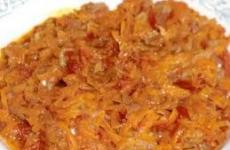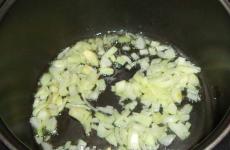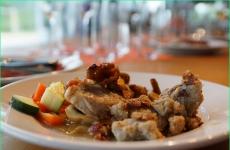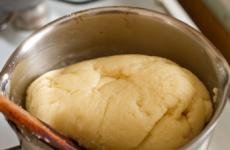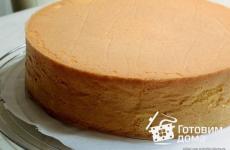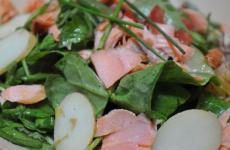What is better pine or. Spruce or pine: How to choose lumber for home? What material to choose for construction
Coniferous breeds due to low density, providing good thermal insulating quality, optimal for the construction of houses year-round accommodation. But what is better: a coat of ate or pine? Pine with a solid, well-grilled core and loose top, direct barrel and high resistance Placement is most in demand in the manufacture of a bar. Mostly this breed of wood is used to build residential buildings in Russia, Finland and other northern states. But spruce as close as possible technical characteristicsIt has a soft core and solid top layer. It is slightly more susceptible to rot, but under the action of moisture does not light in contrast to pine.
Advantages and disadvantages of a bruse of ate
The main characteristics of the faces are:
- difficult processing due to increased bumps, leading to the rise in the cost of sawn goods;
- a minor concentration of resins in the composition of wood, which causes low natural resistance to moisture, damage to fungi, insects;
- white shade, which does not change over time, and a homogeneous structure of fibers that make the material optimal for finishing works.
The fir is optimally suitable for the production of curved elements, it is used in the construction of arbors and baths. Mass ate in the process chamber drying It is significantly reduced, therefore, with the same sizes of spruce lumber lighter than pine, which saves the foundation on the arrangement. A spruce in the drying process is strongly exposed to deformation, so without resistance with the help of the clips it will lead it. Bitch spruce - essential flawwhich leads to a ban on its use in carrier structures (Drop-down bits have a negative effect on strength). However, the industrial fir, harvested in the server regions of the country (Arkhangelsk, Vologda), is practically devoid of such flaws: it has long and smooth trunks, at the bottom it contains a small amount of tightly sitting bitch. When choosing a bar of a fir carefully read the manufacturer's documentation, find out about the place and period of wood blank ( qualitative materials harvest in winter).
Dignities and shortcomings of a bar of pine
The advantages of pine are associated with its high strength and resistance to moisture, fungal lesions, due to the high concentration of resins in the composition. It is easy to process, piety (due to this, ready-made materials are inexpensive) and is suitable for the manufacture of products of complex forms. The advantages of wood are as follows:
- the possibility of making a timber with different cross section (the thickness of the lumber, the warmer the building built from it);
- pine chamber drying practically does not give a shrinkage, is not subject to deformation, the most resistant to the effects of twisting forces;
- high strength of material with middle density, as well as a small mass of the bar allow you to save during construction through the arrangement of light foundations;
- pronounced structure and rich shade of wood cause the construction of houses from a bar with minimal decorative finish (Materials are enough to handle the melted varnish to emphasize natural beauty textures).
Bar from pine is great for the construction of residential buildings, mounting rafter systems, use as roof support beams. But over time, the wood pine tremens, acquires a reddish tint, which is not observed in the ate. At the same time, the pine is suced, harder and less susceptible to rotting.
What kind of wood use during construction and finishing at home? Usually the choice is among the most popular breeds in Belarus - pine or spruce. This choice is due to the availability of these sawn timber, as they grow in the territory of the Republic of Belarus. Moreover, Pine is always in a winning position due to more distribution. However, there is still a tree as a larch, which will be taken to us from Russia. Larch closes the top three among coniferous trees. Let's try to figure out what is better - spruce, pine or larch.
How to choose wood
The consumer is primarily interested appearance Woods. Here, as they say, there is no taste and color of comrades. Each chooses solely from their preferences. Moreover, the types of wood also relates to personal preferences. To someone, for example, it seems that the wood of the Extra variety is similar to plastics, because There are no bitch on it.
Wood color spruce, pines and larch
![]() White boards from ate
White boards from ate  Yellowish pine boards
Yellowish pine boards  Redanished larch boards
Redanished larch boards
Spruce, pine and larch are coniferous rocks. Wood spruce the most white, the bitches are small and arranged chaotic, the kernel is not expressed. Pine can already distinguish the kernel, her wood is more yellow, the bitches are larger and growing with piles. The larger core has a reddish tint, it is very large and dense, the color is very different from the Cold.
 spruce
spruce  Pine
Pine  larch
larch
Wood resistance to rotting
The second most important question is the resistance of wood to rotting. This question gives the answer

However, Guest is not entirely clear. After all, everyone knows that larch is more rack than pine or spruce. There is exist for this the concept of relative wood resistance (For 1.0, the resistance to the airproofing linden was taken).

Resistance flies to rotting average. And throughout the cut from the center of the trunk to its edges, approximately the same one. Pine belongs to resistant rocks. In the larch there is one nuance - the core has a very strong natural resistance. But the persistence of sickness in larch is less than even in a her.
For soiling protective compositions
Definitely leads pine, i.e. Her crooks perfectly absorb antiseptics and oils. And what is the most interesting, spruce is the most less resistant breed of the considered, so much is also impregnated badly as a larch, which was tightly eating at times! Those. for exterior decoration best breeds - Pine or larch. Spruce is good for interior.
Mechanical properties of wood
The third, which is interested in, these are the properties of lumber, which affect their operation and processing. All considered conifer breeds have sufficient structural strength. They can be applied without restrictions in construction and finishing. 
Larch
Due to the tight nucleus, the larch is the strongest, the most severe and the coldest. It is very difficult to handle, it is especially difficult to cut and strict - the tool is plucking and stupid. However, the painting of properly prepared wood usually does not cause problems. Larch is very high coefficient of drier, as well as pressure swelling. This is a consequence of postulates - the more densely wood, the more related moisture in it.
The larch is much more pine and ate is subject to warping and cracking, has high internal stresses. To reduce these phenomena, the poles from the larch must be coated with protective compositions that prevent the penetration of moisture in / out of wood. Only if this condition is met, it retains its physical parameters (does not dry / swells, not cracking). If you use larch as piles, then this parameter is not important. In a constant wet environment, the larch only becomes stronger (mowels). When installing, the larch necessarily requires pre-searched (because it can split). When using larch as a terrace board, compensation cuts should be made to remove the internal voltage. therefore terraced board Of the larch is always made in the "Velvet" profile (comb).
Spruce
Tree is the root and the warmest breed. In the fresh form, the fir is easily processed, although solid small bitches during processing often delivered a lot of problems up to chopping the blades of the processing tool. With high humidity, it quickly boots and destroys. For the outer operation, the fir should be specially inside the facilities of the fir eats the smells of more than other breeds. But at first, a beautiful microclimate in the spruce house. Due to the homogeneous structure of the wood, the fir is less prone to warping and cracking. The fir is well bend, less resinist, almost does not turn yellow.
Pine
Pine is the Golden Middle among coniferous rocks. Like the fir, it has a low dermisk coefficient, i.e. Running much less larch. It is perfectly processed - sawing, polished, soaked, gluits. Pine is the main construction material When building houses. It is possible to refer to the disadvantages of pines, it is like a fir, it is easily scratched and damaged. To reduce this shortage pine boards Fold with varnishes, which penetrate into the upper layer strengthen the surface. Mostly it concerns furniture and floors.
Wood drying coefficients

As mentioned above, larch has a greater coefficient of drying and swelling than pine or spruce. Operation outside the premises in our climate occurs at 12% in summer to 20% in winter. In GOST 6782.1-75, the tables provide such data: a drying of a 100 mm thick bar to a humidity of 17-19% is 3.4% for pine and spruce and 4.4% for larch. These coefficients are important to consider when mounting terraces and facades. It is necessary to leave the necessary gaps for natural expansion / wood compression depending on the season of the year.
Thus, the mechanical properties of wood do not give a unambiguous answer, which is better - spruce, pine or larch. It all depends on the place of use of wood.
The use of ate, pine and larch
Larch More in demand in places with high humidity, on terraces, facades of houses. She will behave well like flooring In the passing places where they often go on heels. This tree is also suitable for parquet. But the house of larch will be cold, and the facade is heavy, requiring a very reliable attachment. When using it in outdoor finish, on terraces, larch requires constant attention - processing with protective oils.
Pine - This is a wonderful design material, behaves well and as a finishing (plaquen, lining, imitation of the bar ...). Pine is unpretentious during operation, but during outer operation requires antiseptation or any other protection. When using pine on terraces, it is preferable to use the so-called deck board. The deck board does not have a comb on the front side. Since the pine is a sufficiently soft tree, the comb with time takes a sufficiently untidy look. In addition, the comb is a wonderful "garbage collector." Facades of pine trees behave well when changing the weather. They keep the LCP on themselves well, and also have a beautiful natural drawing.
Spruce more in demand in the production of paper than in construction, although it turns out beautiful finishing material for interior decoration premises. Spas lining is characterized by white and lack of a pronounced picture. Using ate without appropriate antiseptic processing With outdoor decoration is undesirable. This tree does not have such a natural antiseptic (resin), like a pine or larch.
Ultraviolet It acts negatively on any tree, regardless of breed or backwardness, as well as on any coating. Spruce, pine or larch will burn out in the same way. And this means that for the street, the defining factor is protection against rotting. The burnt board can be repainted, but you have rotted only replace.
Article Pine or larch It was changed: September 13th, 2018 by the author LLC "LESKHIMPROM"
The choice of the main material for construction is an important task, on the competent solution of which the reliability and durability of the planned construction, as well as the level of comfort of living, is a serious degree. Given this, it becomes clear why the definition of whether the timber from a fir or pine is better suited for the construction of a house or another building, it becomes essential.
Comparison of properties
The most clearly comparison of the properties of a bar made of pine and spruce is made using the presentation of data in the form of a table. Naturally, the most serious and essential indicators of materials should be compared.
|
Compared parameter |
Bar of ate |
Bar from pine |
|
Color and its change over time |
Close to white, in the process of long-term operation, the color change does not occur |
Various shades yellow color ranging from yellow to brick. Over time, the color of the bar does not fuss |
|
Structure |
Equal over the entire length of the tree trunk |
Stable and uniform for the whole depth of wood |
|
The presence and number of bitch |
Relatively large number of shorts of small size |
Rare, but at the same time large bumps |
|
Density |
On average, the timber from the ate with a standard humidity of 12%, weighs about 450 kg / cube. m. The coniferous rocks of wood is lighter deciduous, and spruce is one of the leaders, yielding a cedar whose density is 410 kg / cube. M. |
On average, the pine timber weighs about 520 kg / cube. M. |
|
Thermal conductivity |
Due to the less dense location of the fibers, the spruce bar has better energy efficiency - 110 MW / cubic meters. M. |
Pine timer worse holds heat, having a thermal conductivity indicator of 150 MW / cube. M. |
|
Resistance to rotting |
Due to the presence in the structure of wood, the resin, the timber from the fir is sufficiently resistant to rotting, mold and the appearance of microorganisms |
The obvious plus material is the high resin content reliably protects the bar from rotting. Minus this provision - possible "tears" of individual structures |
|
Production technology |
More difficult to process due to large number Suchkov |
It is easily processed, which is achieved by a small number of bitch and the soft structure of the wood |
|
Strength |
Bending strength - 74 kgf / cube. cm, load bearing capacity equal to material from pine |
Higher bending strength, the indicator of which is 79 kgf / cube. cm |
|
Aesthetic parameters |
Defined tastes and preferences of the owner of the construction. Bright hues ate and thin fragrance are valued with a considerable number of lovers |
Bright color and saturated coniferous smell are suitable for large numbers of residential buildings and baths |
|
Cost |
A more complex processing technology leads to a logical increase in the value of the material |
Price pine Bruus lower than that of an analog made of fir |
Some findings
The choice of material for the construction of a building from a bar depends on the criteria listed above. The final decision takes the customer of construction, based on its own preferences, tastes and financial resources. For most operational and technical parameters, both breeds demonstrate impressive characteristics with a small freight bar of ate. However, pine is more accessible at cost and somewhat stronger.
The aesthetic characteristics of spruce and pine timber also differ significantly. However, each of the materials has its own advantages, so the final choice depends on the wishes of the owner of the planned building. The main thing is to find a manufacturing company capable of making high-quality bar From the selected tree of wood.
To answer such a question objectively, representatives of conifers should be considered in more detail and for "utility" them for construction and comfort as a whole. Below is a table, it does not have the goal to compare both wood, but clearly demonstrates the real qualities of the timber species for construction. Having shifted this information, it can be concluded about the feasibility of buying a particular type.

Table of real qualities spruce and pines
If information is not enough, you can always refer to competent sources for clarification. Below is given detailed description Each point of the table. So:
| Useful properties of breed for private construction | Spruce | Pine |
|---|---|---|
| Color | White | From bright yellow to brick |
| Stability Tint | High | Changes in a more intense shade |
| Structure of fibers | Uniform | Pronounced |
| Natural humidity | 12% | 12% |
| Resinity | Low | High |
| Suchness | A large number of small | Small number of large |
| Natural protection against rotting | Average | High and even exceptional, depending on the variety |
| Silence | Do not shine | Such an effect passes with time |
| Mechanical restoration | It is difficult because of the large number of bitch | Any |
| Usal scope | Baths, gazebos, furniture | Residential buildings, log cabins, frame |
| Price | From 2500 rubles / m³ | Up to 4000 rubles / m³ |
Total qualities include longevity of material and ready Srub. Some of them are capable of standing at least 300 years. It is worth paying attention to the diameters of the trunks, the more, the warmer it can not boast of this, but Pine, on the contrary.
So, what tree is the best of all build a house? Spruce, pine or pay attention to other breeds? The answers on the table are given below.
Color and Fiber Structure
This is what attracts customers visually leaves the mark in memory. From this point of view, the pine house is more attractive than the log house of a spruce, having a single shade that does not change over time. A variety of colors from solar to the hidden is valued by true aesthetes.
However, buyers scare off blue. They consider it an indicator of rot. People! This is not true! It speaks only about the freshness of the cut and with the time of Pine will become beautiful, and it will also change shades.
And the house of ate, like all the wood, will become dark from moisture and nothing more. Annual rings, please the eye with their unusual pattern - this fact refers to the pine. A spruce can not boast - its structure is homogeneous and due to the color of imperceptible.
Humidity
It is almost the same in both breeds. But it is worth remembering that there is a difference of the cutting time - if it is produced in winter, there will be no complaints. Summer billet is fraught with curvature and large shrinkage in the future.
To a greater extent it belongs to the pine. Fir without proper resistance through clips when drying leads and bends, it is subject to more than pine.
Resinity and sunsity
In addition to sludge, such an effect has another unpleasant and, how to say, a destructive feature - it will not give our lung to breathe, blocking sticky pores. Inhale only decoction of coniferous needles, not a resin. Therefore, the choice of spruce fire for the house will be unpromising, and for a bath just right.
But sometimes abundant sunsity is a designer find. This technique can be used by applying different trim on the facades or as decorating the inside of the bath. By placing relatively symmetrically, such patterns, the owner will receive an exclusive object, causing envy in neighbors.
Protection against rotting
Coniferous breeds, in contrast to deciduous, excluding oak, always contain a high concentration of own protective solutions. They interfere with disagreeable bacteria, mold, rotted and put a good barrier to rodents. However, this property is expressed in the pine brighter than the ate.
This is due to the fact that unintelligent channels along which the "immunity" moves, have a big length than the fir, where the bumpness still interrupts their current. The house of the tree will have to handle protective compositions earlier than from pine.
The owner of the material should be remembered that according to the import of raw materials to the construction site, it is necessarily processed before the start of storage and storage - the construction does not go in one day. After processing, a brica or a timber is placed on supports, without contact with each other and is covered with styrene film from precipitation. From time to time it takes off and ventilate material.
Mechanical and manual ability
It is high in both breeds, since the structures are soft. But nevertheless, neat cuts and sleeps are best to transfers pine, but it's up and grinding - a Christmas tree. It all depends on the desired end result and conceived product.
Of both breeds, it turns out extremely beautiful, twisted furniture that values \u200b\u200bin the West. The hand logging is not difficult if only the master has a skill with a saw and an ax. This, by the way, can play a keen joke with an inexperienced builder - grab a large piece of wood is quite bye, therefore act with caution.
Usal scope
It is extensive - you can build a house from pine or christmas trees, marshy furniture, arbor, bath, wells. However, for residential buildings in Pine priority, you can use the Christmas tree for all others. This advice to those who seek to reduce the construction of a whole complex on the plot.
Lumber from described breeds
Budget construction with the use of wood is quite possible and without the use of the array. We are talking about a bar or frame construction. Agree, it is more profitable to use the casket than a whip.
For firmware use wall panels Or the same sawn timber from the selected breed, standing at times less solid raw materials. In this case frame house From the tree or pine is in the same advantages, if we talk about appearance.
BUT B. constructive plan Improvements in wood has a great importance. A fir for carrier supports is categorically impossible, bearing that when drying, the bitchs have the property fall, thereby reducing strength. Therefore, it should be purchased for cladding, or use the timber from the ate for the house on the horizontal planes of the frame object.
Not always practical advice Influence the choice of the consumer. But he should consider that the construction of a residential building is not only external beauty, but also a big responsibility. Before the construction and choice of raw materials, it is necessary to ask yourself a question - whether the family will pull the maintenance of a wooden facility that sometimes is quite notice.
Coniferous trees grow almost everywhere, including both warm and cold regions. In some areas, representatives of this family prevail over the rest of the plant species. The most famous of them are fir, spruce, pine, cedar, juniper, cypress, larch, tees and sequoia. Mainly tall treesBut there are also dwarf representatives, and shrubs. In our latitudes, conifers are widespread, but not everyone knows, for example, what is the difference in spruce.
Features of these trees
All representatives of vote plants combine a method of reproduction with cones. This kind is called because the seeds are located right on the scales of cones. Another feature of these trees is that instead of sheets they have needles. This is an adaptive function generated during the adaptation to the cold conditions of existence. Coniferous trees have the form of a cone, often grow very high, and their needles do not dump their needles. it general features All representatives of this species.
Highly important quality Also is the composition of wood, which is enriched with such important components such as ethers, resins and trace elements that make these trees a special value. Use it in the manufacture different species Products, ranging from clothing and paper products and ending with high-quality furniture, for the production of which the best representatives of the forest are chosen.
Spruce and Sosina
These are the most common representatives of peacefully existing in the coniferous kingdom, the trees of spruce and pine have a fragrant aroma and an elegant form, standing out on a general background. It is these that are found in every city, in the forests, are used as raw materials for the manufacture of paper, furniture, for construction. They are dedicated to many poems and songs, in all countries there is a custom Imaging the Christmas tree on New Year. It also uses the needles and resin of these trees in medicine and cosmetology.

Spruce: Short description
This is a very beautiful pyramidal form. In the first 15 years, the fir is considered a young tree and has a simple root of the rod structure. Then, during the development process, it becomes more branched and the main root is dying as unnecessary. On the surface there is an identical situation, for a long time the tree grows extremely up, without giving side processes.
The trunk covers the scaly layers of the gray bark. Cooked in ace light color With a light golden tint, practically does not emit resin, the structure is homogeneous. The shape of the needle fir is distinguished by a cone-shaped structure. Full renewal of the coniferous crown occurs within 6 years. Places remaining without barns are covered with fresh vegetation in the coming year.
Considering the cones of different coniferous trees, it is possible to understand what a spruce is different from pine. Under the clue, you can note cylindrical shape and a little pointedness. A feature of the cones ate is also what they hang down.

Types of Ebel
For more detailed consideration of the features of these trees, it is worth mentioning the blue ate. This beautiful plant is used for a decorative disembarkation. The height of the adult can reach 50 meters. True, often there are copies not higher than 25-30 meters at a stem diameter of 1.5 meters. The needles of the fir originally takes a conical shape, then stronger, becoming cylindrical. The length of the chewing does not exceed 3 cm, and the bumps of the blue spruce can grow to 11 cm, taking shades from reddish to violet.
Spruce Glen is original tree With a non-stubborn crown. It is in height, it reaches about 30 m, while the diameter of the trunk varies from 60-80 cm. Japanese, Kuril Islands, as well as some regions of Sakhalin are the main place of gravity of this interesting view. Looking at this tree, you can accurately understand what a spruce is different from pine. Mainly, this is the form of the needles and the length of the chewing, not exceeding 3 cm. You can add the structure of the crust and wood.

Pine: Quick description
Pine is a centuries-old tree, and its age can range from 100 to 600 years. There are subspecies of this plant as shrubs, trees or stabes. Currently, it is known only about several copies who lived to 500 years. Pine height can reach 75 meters, and its base is 4 meters width. Preferring a middle tree in a wetlands does not exceed 1 meter.
Pine grows on open areas locality, as it is a light-affiliated plant. Here the pine height can reach a maximum - 50-75 meters, and the variety of forms and sizes of pine cones amazes unpredictable bends.

What are pines
This family applies several different species. For example, we should consider the main places where the tree has become excellent, the European and Asian territories became. The length of the chewing can reach 10-15 cm. Centuries-old trees are distinguished by empty branches, high strength and resinness. Wood trunk straight covered with thick protective layer gray-brown cortex. The top of the pine is characterized by orange-red bark, which quickly and easily cuts. The main growth of the tree takes place in the first century of his life.
Dwarf pine is used as decoration household plots. It is perfectly coming in a small area, easily processed and leaves garbage. In addition, due to the small sizes, it can be placed in a small area. These trees are perfectly combined with Flora landscape design Thanks to all sorts of coloring. Dwarf pine - unpretentious plantBut for the disembarkation it is necessary to use seedlings aged 3 to 7 years. You can exclude an additional watering, as the trees are able to receive all the necessary moisture independently from ambient. The exception can be the most arid regions.

What is the difference in spruce
These two trees have become so familiar to modern manMany do not even think about which of them is growing under the base. A. new Year's celebration, dressed up barbed beauty, everyone is called her "christmas tree". But after a detailed study of the facts, it is possible to understand what the fir is different from pine.
- First, pines makes it possible to use it as a wonderful raw material for the woodworking industry. While the fir is used only for the production of paper and lumber of low quality.
- Secondly, if you carefully look at the needles of trees, you can easily see the difference between long fir and pine chevings.
- Thirdly, in the shape of the trees absolutely different: the branches of ate are always lowered down, covering the trunk, as opposed to her pine branches, precisely candles, directed up. On the ate of the branches are located evenly throughout the trunk from the bottom to the bottom. Pine needles are located mainly at the top of the trunk.
- The fourth difference is the root system, due to which massive trees are held on the surface. Rhizome ate often goes to the surface, which makes it vulnerable to windy and arid territories. Pine roots leave deep into the ground, which allows it to strongly hold on to its place, regardless of climatic conditions.

